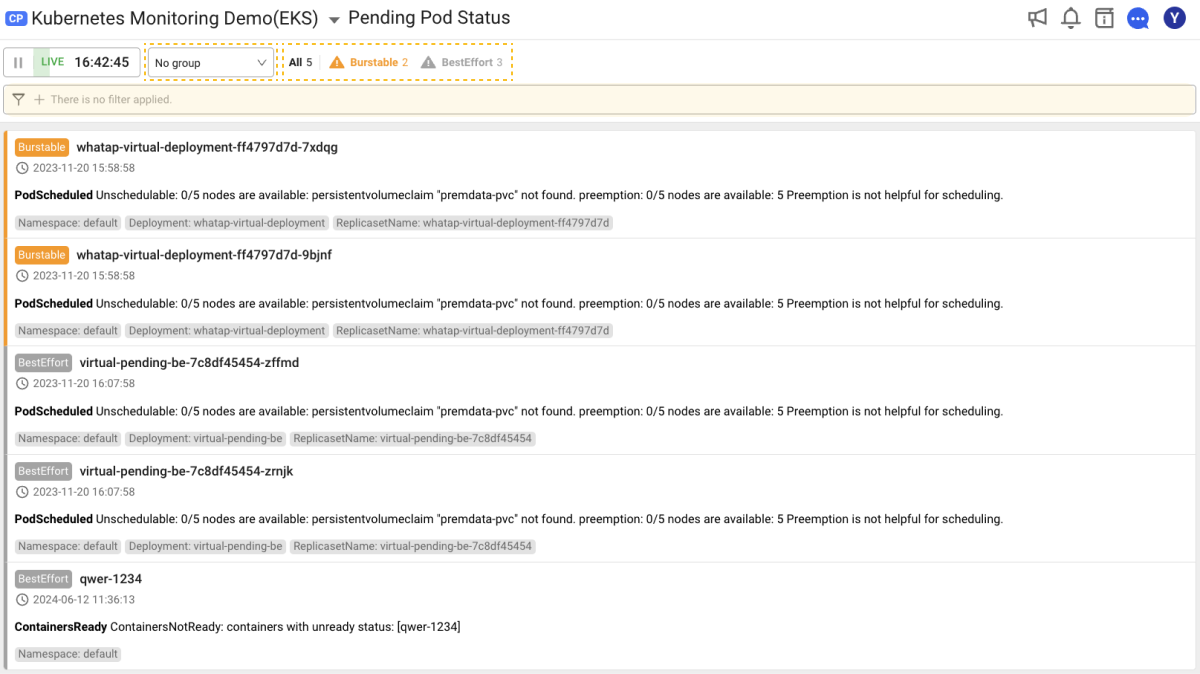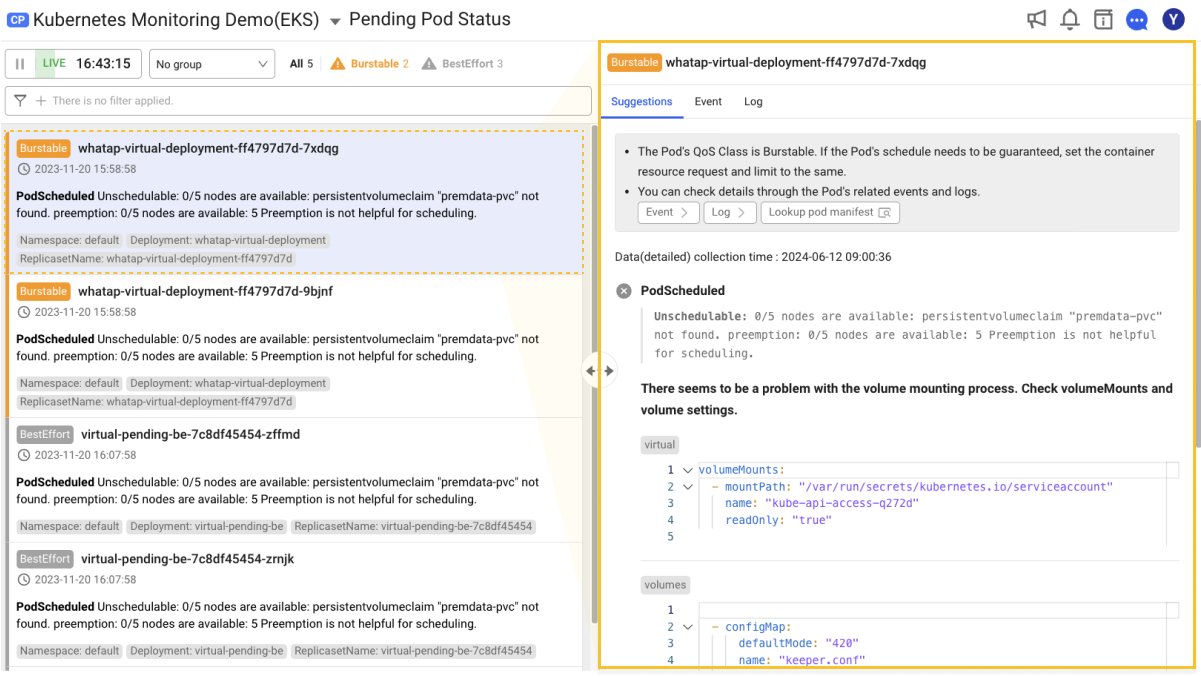Pending Pod Status
Home > Select Project > Workload > Pending Pod Status
Requirements
The WhaTap Kubernetes agent 1.7.0 or later is required.
You can comprehensively analyze the cause of delays for each Pod by checking the status of Pods in pending status. The more Pending Pods there are within the cluster, the less efficient and stable the system can be. Maintain the stability of the cluster by monitoring Pods in Pending status to detect and resolve issues early as possible.
Pending Pod list
You can view the list of Pods in Pending status as follows. For each pending Pod, you can briefly check the QoS class, Pod name, timestamp, event message, namespace, and deployment information of the Pod. When you select a Pod, you can view the pending Pod details. For more information, see the following.

Grouping and QoS Class inquiry
It provides grouping for each object. You can easily check the status of all pending Pods related to a specific namespace, node, or replica set, making it easy to identify and analyze problems. You can also check the number of Pods in Pending status by QoS Class. When you select a QoS class, you can search for Pods belonging to the QoS class in the list.

For more information about QoS Class (Quality of Service Class), see the following .
Filtering
You can search by additional conditions through filtering. In addition to the filter selection window at the top, you can use the filtering through the tags at the bottom of each pending Pod in the list. When you select a tag, matching conditions for the object are added, and the tags that meet the conditions are displayed in blue.

Pending Pod detail
When you select a Pod from the pending Pod list, you can check detailed information about the Pod through the Suggestions, Event, and Log tabs as follows:

Suggestions
The following provides various information on why the Pod is in Pending status and for troubleshooting it.
-
QoS Class analysis
You can check scheduling recommendations by analyzing the QoS class.
-
Detailed data collection time
You can see when those details were collected.
-
Pending Pod event messages and troubleshooting suggestions
It checks event messages, identifies problems, and suggests solutions based on them.
-
Information about issues
It provides information about the problems occurred. For example, if there is a problem with the volume mounting process, it guides you to the volume settings. If there is a problem with node resources, it guides you to information to check the resource.
Event
It provides information about events from the container running in the selected Pod. It is the same as the Event tab in Container Map. For more information, see the following.
Log
It provides information about the logs of the container running in the selected Pod. It is the same as the Log tab in Container Map. For more information, see the following.
Container logs can be viewed only after running the container. If a Pod remains in pending status before running the container, it is impossible to check the container log for the Pod.